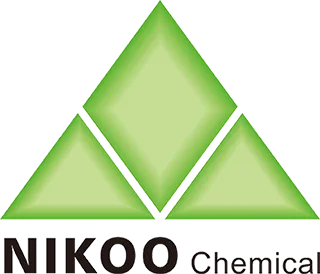Unlocking Cosmetic Potential: The Role of β-Cyclodextrin Inclusion Complexes
In modern cosmetics, β-Cyclodextrin (β-CD) is a powerful and versatile tool for molecular encapsulation. Its unique structure—a hydrophobic internal cavity and a hydrophilic external surface—allows it to form inclusion complexes with a wide range of "guest" molecules. This process fundamentally alters the properties of the guest molecule, solving numerous formulation challenges and enhancing product performance.
Detailed Functions & Cosmetic Applications
1. Stabilization of Active Ingredients
Mechanism: The β-CD cavity shields sensitive molecules from degradation by oxygen, light, and heat.
Application:
Retinol Stabilization: Retinol is highly unstable and loses efficacy quickly. Complexing it with β-CD protects it from oxidation, significantly extending the shelf life of anti-aging serums and creams.
Vitamin C Protection: The potency of L-Ascorbic Acid can be maintained for longer by protecting it from its aqueous environment.
Preservation of Oils: Protects unsaturated oils (e.g., Rosehip Oil, Borage Oil) from going rancid.
2. Solubilization of Insoluble Ingredients
Mechanism: Encapsulates oil-soluble ("lipophilic") molecules, allowing them to be dispersed in water-based formulas.
Application:
Clear Formulations: Enables the creation of crystal-clear serums, toners, and gels that contain oil-soluble vitamins (A, D, E, K) or fragrances without cloudiness.
Enhanced Efficacy: Improves the dispersion and bioavailability of poorly soluble actives, ensuring they are evenly delivered to the skin.
3. Controlled Release & Enhanced Performance
Mechanism: The guest molecule is released gradually upon application, triggered by skin moisture, enzymes, or friction.
Application:
Long-Lasting Fragrance: In perfumes, body lotions, and haircare products, fragrance oils are encapsulated and released slowly, providing a sustained scent for hours.
Targeted Delivery: Actives can be delivered more effectively as the complex breaks down on the skin.
Moisture-Activated Release: In deodorants, β-CD can trap odor molecules and release them only during washing.
4. Masking Odors and Reducing Irritation
Mechanism: Physically encapsulates molecules responsible for unpleasant smells or skin irritation.
Application:
Odor Masking: Neutralizes the strong, medicinal odors of ingredients like Tea Tree Oil, Sulfur, or some herbal extracts, improving the user experience.
Reducing Irritation: Can lower the potential irritation of active ingredients like Alpha Hydroxy Acids (AHAs) or retinoids without compromising their efficacy, making them suitable for sensitive skin types.
| Product Category | Ingredient Complexed | Function & Benefit |
|---|---|---|
| Anti-Aging Serum | Retinol / Retinyl Palmitate | Stabilizes the vitamin, extends shelf life, reduces irritation, and allows formulation in aqueous environments. |
| Brightening Cream | Tranexamic Acid / Kojic Acid | Enhances stability against light and air, maintains the potency of the brightening actives. |
| Long-Lasting Perfume | Fragrance Oils | Controls release, provides a sustained scent, and protects the fragrance accord from rapid evaporation. |
| Clear Vitamin C Serum | L-Ascorbic Acid / Oil-Soluble Vitamins | Solubilizes actives in a water-based formula, stabilizes Vitamin C from oxidation. |
| Acne Treatment Gel | Tea Tree Oil, Salicylic Acid | Masks the strong odor of the oil and can reduce potential skin irritation from the actives. |
| Deodorant / Body Spray | Odor molecules (e.g., from sweat) | Traps and neutralizes odor, releasing it only when washed. Also used to encapsulate the fragrance. |
Advantages for Cosmetic Formulators
- Enables Advanced Formulations: Allows for the creation of high-efficacy, multi-active products that were previously impossible due to instability or incompatibility.
- Improves Sensory Profile: Creates products with better texture, clarity, and fragrance.
- Enhances Consumer Safety: Reduces the risk of irritation from potent actives.
- Boosts Marketing Claims: Provides a scientific basis for claims like "long-lasting," "stable," "gentle," and "high-potency."
In summary, β-Cyclodextrin inclusion complex technology is a cornerstone of modern cosmetic science. It empowers formulators to overcome inherent physical and chemical challenges, leading to more effective, stable, and pleasurable skincare, fragrance, and haircare products for the end consumer.

